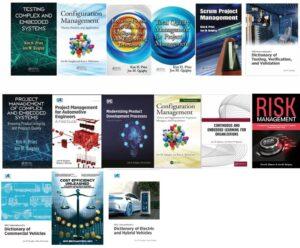Benefits of Swim Lane Process Flows for Product Development
Jon M Quigley
The Benefits of Swim Lane Process Flows for Engineering, Manufacturing, and Procurement
Swim lane process flow benefits in product development. Product development is a complex journey that involves multiple teams and departments, including engineering, manufacturing, and procurement. This requires coordination across the board, not optimization of a single department, but balancing the needs of each to deliver the desired outcome. We are working with a product development and manufacturing company; in fact, we work with many companies of this type. Even when the flow is well established, there is often areas of improvement with a bit of exploration. One powerful tool to improve clarity and streamline these interactions is the swim lane process flow. By visually segmenting processes into lanes based on roles or departments, swim lane diagrams bring significant benefits to the process flow in product development from the association of work processes and artifacts. These diagrams enhance accountability, streamline communication, and uncover bottlenecks that slow progress.
What Is a Swim Lane Process Flow?
A swim lane process flow is a type of flowchart that organizes a process into distinct lanes, each representing a team, department, or individual responsible for specific tasks. This structure visually delineates responsibilities and highlights how tasks move between lanes. Compared to traditional flowcharts, swim lane diagrams offer unique advantages by combining process steps with clear ownership, making the complex product development process more manageable.
Swim Lane Process Flow Benefits for Engineering, Manufacturing, and Procurement
Many things must go approximately right to engineer and deliver a product to the customer. Part of any project involves understanding the workflow, identifying who needs what, and determining the quality attributes of those deliverables, which are essential for success. Swim lane flowcharts help us understand the workflow and the exchanges.
Clear Role Definition and Accountability
In product development, the responsibilities of engineering, manufacturing, and procurement can overlap or be confusing if not clearly defined. Swim lane process flow benefits in product development include making role ownership explicit, so each stakeholder understands their tasks, reducing miscommunication and task duplication.
Enhanced Cross-Functional Communication
Swim lane diagrams visually represent handoffs between engineering, manufacturing, and procurement, thereby enhancing communication channels. This visibility helps teams align their schedules and priorities, minimizing delays caused by unclear interfaces or missed handoffs.
Identification and Elimination of Bottlenecks
One of the most impactful benefits of the swim lane process flow in product development is the ability to identify bottlenecks where tasks accumulate or handoffs slow down. By mapping these workflows, organizations can analyze and resolve these friction points, accelerating the overall product timeline.
Streamlined Process Standardization and Optimization
By documenting processes visually across all involved functions, swim lane diagrams provide a foundation for standardizing and continuously improving procedures. Engineering changes, manufacturing setups, and procurement cycles can all be aligned and optimized for efficiency and quality.
Practical Applications Within Product Development
The primary benefit of process flow exploration, such as the swimlane, is to integrate multiple departments or organizational functions. I learned a Swedish saying from working at a Swedish company. Things fall between the chairs (departments). We can make the lanes to address the part of the flow that we wish to explore.
- Engineering teams can use swim lane process flows to clarify design approval steps and coordinate with manufacturing feasibility checks, as well as communicate future material needs to procurement.
-
Manufacturing teams benefit by visually tracking production readiness and quality validation stages across departments. The manufacturing team can begin developing specialized tools and the manufacturing line process flow (see APQP).
-
Procurement can manage supplier selection, ordering, and delivery schedules with clear visibility of how their tasks integrate with engineering and manufacturing timelines. This includes engineering articulating key information regarding the possible ECN long before the delivery of the ECN and the product, considering the disposition of on-hand material.
Conclusion
The swim lane process flow provides essential benefits in product development by clarifying roles, enhancing communication between engineering, manufacturing, and procurement, and facilitating the rapid identification of process inefficiencies. Implementing swim lane diagrams empowers product teams to deliver better products faster with fewer errors and reworks, making them an indispensable tool in modern product development management.
By integrating swim lane process flow benefits into product development, companies can achieve smoother workflows and stronger cross-functional collaboration, which fuels product success.
This makes swim lane process flows a must-have for engineering, manufacturing, and procurement teams striving to excel in today’s competitive market.
For more information, contact us:
The Value Transformation LLC store.
Follow us on social media at:
Amazon Author Central https://www.amazon.com/-/e/B002A56N5E
Follow us on LinkedIn: https://www.linkedin.com/in/jonmquigley/
https://www.linkedin.com/company/value-transformation-llc
Follow us on Google Scholar: https://scholar.google.com/citations?user=dAApL1kAAAAJ




